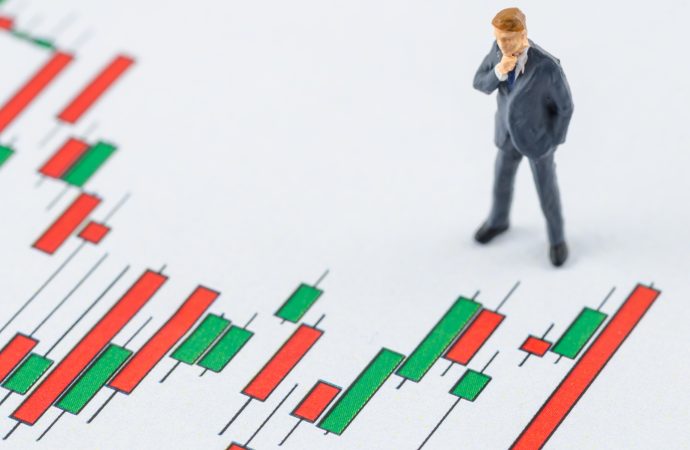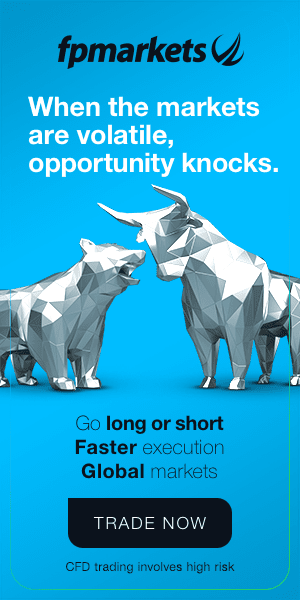Reading time: 8 minutes
Graphs and charts have become the focal point of the modern trading community. Easy-to-use trading interfaces and heightened accessibility have bred a new era of traders glued to mobile charts from the stock market to the world of forex. We’ve all heard the saying ‘buy low, sell high’, but this is shrouded in constant misconceptions.
Firstly, the ‘bottom’ is almost a myth-level conception; hence, expecting a beginner trader to attempt to find this mysterious price level is a little absurd. Similarly, new traders will close positions too early on the idea that a stock price has reached its high, when in fact, the asset has further upside potential. Trading can be futile without proper market analysis, so this article will explore the effective ways to pick apart the difficult world of chart analysis, find and recognise trends, and use this critical knowledge to perfect an investment strategy and maximise returns.
Do Patterns Repeat?
Don’t get completely strung up on an hourly or daily chart. Professional traders will cradle the importance of long-term charts, providing insight into how particular points of volatility align with global or economic events. The general upwards (higher highs and higher lows) or downwards (lower lows and lower highs) trend over the long term or being able to backtest trading strategies on previous past movements before applying them to live investment decisions is crucial.
Trading through a short-term lens might work for forex scalpers who thrive on the minute charts but looking further afield provides a more substantial picture of the currency pair over time, widening the scope for traders who favour longer-term timeframes. Past performance can be vital in understanding overall asset health, whether it’s stocks or forex. Traders often talk about repeating patterns when it comes to chart analysis – hence why meticulously studying the chart of a particular pair can provide strong insight into how price levels react to certain factors; whether that be mass psychology, economic welfare or a reaction to a particular global event.
Understand Mass Psychology
Aside from chart patterns and the technical analysis traders swear by, psychology is critical to market movements. How investors, institutions or traders react acts as kindling for wider trading trends. A global event that sparks an emotional response is inherently reflected in the markets. For example, the tension in the middle east can easily breed uncertainty in the oil markets, whereas a particular political decision in the UK might weaken the value of the pound.
Optimism feeds the fires of eager traders, relying on a defined trend to cash in on the hopes of the crowd. In the end, large investors often start to re-evaluate the validity of the trend or valuation and often sell off, provoking a wider trend of panic selling that can send a positive trend deep into a reversal. Understanding economic events alongside technical patterns is the first step. With a grasp on how this ties into mass psychology, a trader can build a fundamental understanding of overall market trends. For example, uncertainty in a particular domestic market might mean hedging with another strong currency pair, or rising interest rates will spark more buyers in the commodity markets. Crowds move markets, so stay wary and don’t become a blind sheep following a dwindling trend. Equally, trading against the grain can be a dangerous game; make sure your trading decisions are well-informed.
Stay One Step Ahead
Without repeating too much of the previous point, staying ahead of the curve will work miracles in maximising your returns. Technical, chart-based trends can work wonders to provide insight into how the market has moved in the past. Although backtesting strategies and studying historical growth are imperative, staying on top of global information can be the best way to judge and predict future movements.
A professional trader will explain that learning never stops. You will never know everything, and the market will never fail to surprise you – just look at the pandemic, for example. All a trader can do is absorb as much information, advice and varying opinions on a daily basis. Whether it’s online communities, mentors or other sources, we all see things differently, and perspective is so important when it comes to critical trading decisions.
It goes without saying that the global newsroom is a buzzing hub of critical information, alongside obvious financial news outlets. A broad understanding of economic, political and social trends will clear the fog when it comes to the particular strength or weakness of a forex pair, certain company, or commodities. All in all, stay in tune with the world, not just the financial sphere. You can’t expect to outrun the masses of losing traders if you don’t develop an edge, and staying ahead of the global curve is one way to start building one and maximise your returns in the financial
markets.







 Access +10,000 financial
instruments
Access +10,000 financial
instruments

